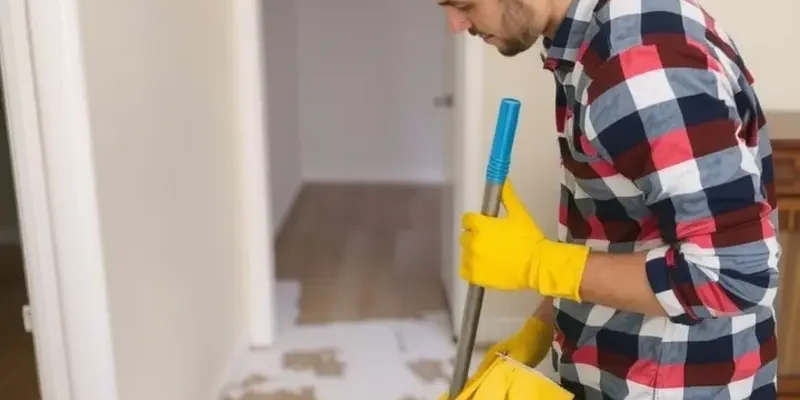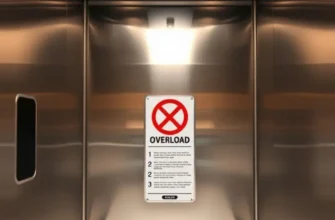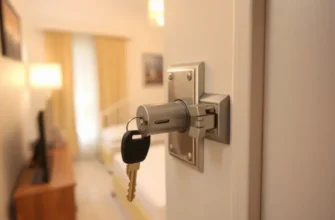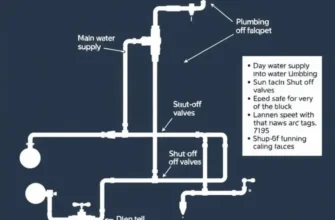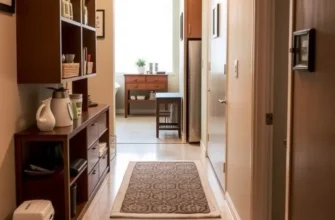Experiencing water damage in an apartment can be alarming for renters. Whether it’s a dripping ceiling, a burst pipe, or flooding from an overflowing tub, the potential for property damage and health issues is real. Addressing these situations promptly is essential—not just for the integrity of the home but for the safety of its occupants. As a renter, understanding your rights, responsibilities, and the most effective ways to handle water damage can empower you to navigate this challenge with confidence. This guide aims to provide practical, hassle-free solutions that prioritize both safety and security. From immediate actions you can take to long-term maintenance strategies, we will cover all you need to know to keep your living space safe and secure. With careful attention and proactive measures, you can mitigate the effects of water damage and maintain the comfort of your apartment.
Immediate Actions: Your First Steps to Manage Water Damage
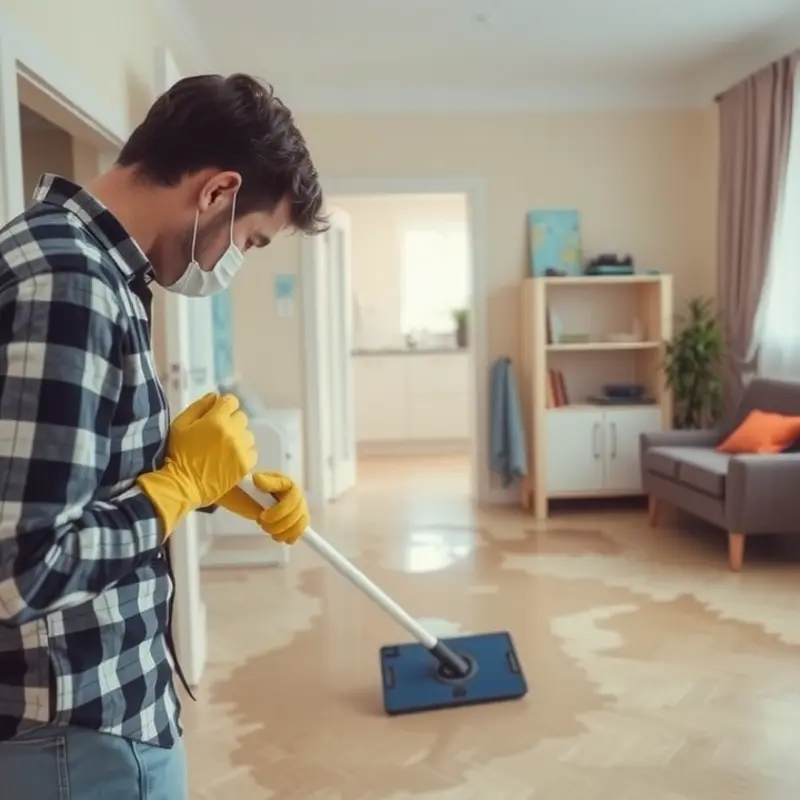
Dealing with water damage in your apartment is both daunting and urgent. Your first reaction can significantly affect the outcome, so let’s get into the essential steps you need to take right away. Begin by assessing the situation closely. Is there still a flow of water? If so, locate the main water supply valve and turn it off to halt any further damage. Meanwhile, consider the risk factors associated with electricity. Water and electricity are a dangerous combination, increasing the risk of electric shocks or fires. Head straight for the breaker box to switch off power in areas affected by water exposure.
Once these immediate threats are controlled, think of safety from another angle. If the water level is high or flooding is significant, evacuate everyone from the premise, particularly if you have children or pets. Prioritizing life over belongings is crucial, so don’t hesitate to temporarily relocate until you ascertain the space is safe.
Before embarking on any clean-up, document the extent of the damage. Use your phone to take photos and videos. This visual documentation will serve as crucial evidence when contacting your insurance company. Delay in documentation could complicate future claims or compensation processes.
After ensuring safety and documenting damage, start working on the environment to prevent further harm. Use mops, towels, or buckets to eliminate as much standing water as you can. If it is safe, increase ventilation by opening windows to let fresh air circulate. Use fans to help dry the area faster, reducing the risk of mold and mildew, provided there is no risk with electricity.
While you might feel inclined to tackle the situation alone, remember that some water damage scenarios are beyond DIY fixes. For instance, if structural damage or sewage water is involved, call professionals for an assessment. Their expertise and equipment can ensure comprehensive restoration.
In managing the aftermath of water damage, developing a checklist of emergency contacts might help you stay prepared in the future. You can explore this emergency contacts guide to keep essential information at your fingertips. Practical steps laid out here are pivotal in ensuring safety and mitigating the adverse effects of water exposure in your rented space. By being prepared, you safeguard your living environment and maintain peace of mind, pivotal in both emergencies and regular times.
Long-Term Solutions: Prevention and Maintenance Strategies
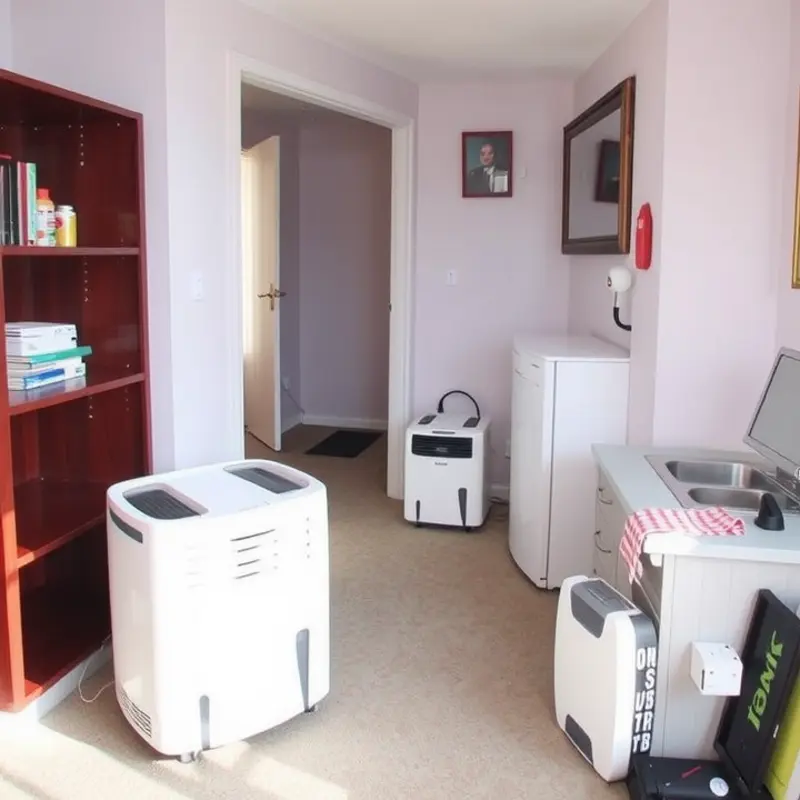
Once you’ve managed the immediate aftermath of water damage in your apartment, it’s essential to shift focus to long-term prevention strategies. These strategies will protect your belongings and enhance the quality of your living environment. Regular checks are a cornerstone of effective damage prevention. Make it a habit to inspect areas prone to leaks, such as under sinks, around toilets, and near appliances like washing machines. Small leaks can quickly escalate into significant problems if left unchecked.
Furthermore, consider employing a dehumidifier, particularly in areas like bathrooms and kitchens where moisture tends to accumulate. Maintaining an optimal humidity level can vastly reduce the risk of mold and mildew, which not only damage property but also pose health risks.
To enhance your prevention efforts, consider investing in water leak detectors. These devices are straightforward to use, typically battery-operated, and can alert you to moisture buildup before it becomes problematic. This proactive approach can save you from the extensive damage that often results from unnoticed leaks.
It’s also vital to communicate openly with your landlord. If recurring issues like persistent leaks or faulty appliances arise, ensure these are resolved promptly. This partnership not only protects you but also ensures a better-maintained property overall.
Equipped with these strategies, you are better positioned to address issues before they become costly problems. Additionally, familiarize yourself with renter’s insurance options to safeguard against potential water damage losses. Understanding your coverage can provide peace of mind, knowing you have a safety net in place.
For added safety, consider reviewing our apartment appliance safety guide to further secure your home against potential threats. Implementing these long-term strategies ensures not only the protection of your physical space but also contributes to a more comfortable and secure living environment.
Final words
Water damage poses a significant threat to both personal property and the safety of renters. By knowing the right actions to take initially and adopting long-term preventative strategies, you can effectively manage and mitigate the risks associated with water damage. Prioritize safety, maintain open communication with your landlord, and consider investing in protective measures. These steps ensure that your living environment remains secure and comfortable. Remember, it’s better to be proactive than reactive when it comes to water-related issues.

